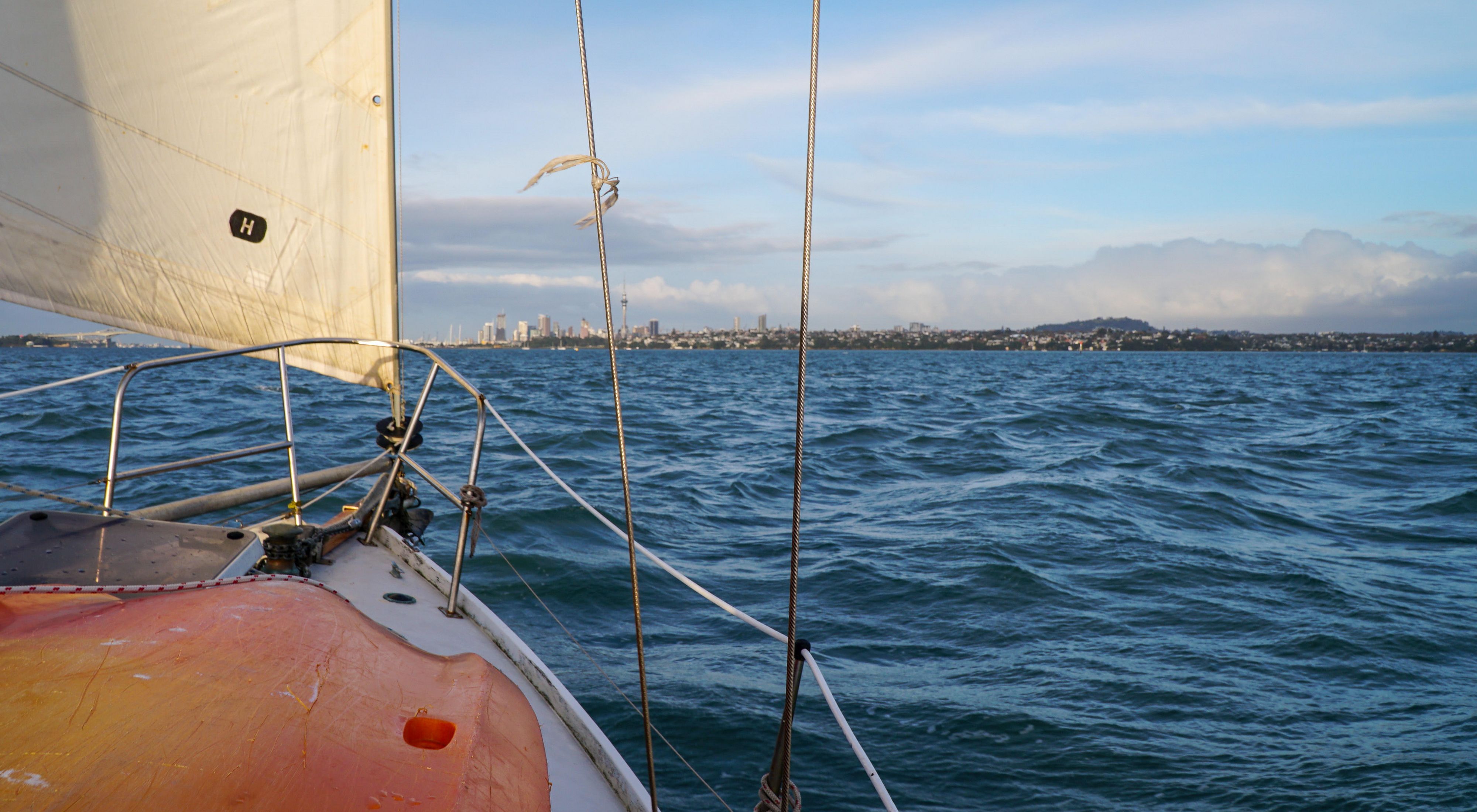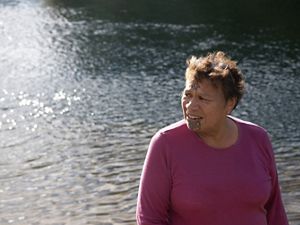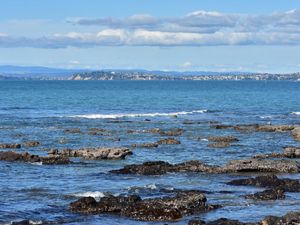Mussel Power
Bringing back the Hauraki Gulf one bivalve at a time
By Ethan Kearns, ex-TNC Coda Fellow and Videographer
It was raining somewhere on the horizon but it leaves us untouched as we enjoy the last rays of sunlight on a productive day. We are touring the inner Hauraki Gulf, scouting a possible restoration site for mussels where The Nature Conservancy (TNC) and partners hope to apply learnings from research at other pilot sites and mussel strongholds.
Quote

through a litany of capsises ... we learnt to sail and began to know the Gulf."
Led by local community member, Stephen Ullrich, we are exploring a volcanic reef on Stephen’s boat, Aquarius, one of the more than 135,000 sailboats that call the Gulf home and give Auckland its nickname ‘The City of Sails’.
Stephen, grew up on the Gulf and learned to sail here. "My Dad built two small boats in the basement garage, a seagull outboard powered skiff and a Sabot, an 8 ft sailing dinghy. He was a busy GP so the skiff was reserved for holidays up north, but my brothers and I got sent out in the dinghy, where through a litany of capsises followed by swimming the swamped boat back to the beach, we learnt to sail and began to know the Gulf."

Over the years Stephen has seen the marine landscape change and not for the better. The Gulf was once home to abundant green-lipped mussels, horse mussels, cockles, pipi, tuatua and other shellfish. These native species formed expansive beds and reefs that played vital ecological roles, such as filtering seawater of sediments and contaminants, providing fish nurseries, stabilizing the seabed and greatly enhancing the Gulf’s biodiversity.
Today, Hauraki Gulf’s shellfish beds are degraded or lost entirely. Overharvesting of shellfish, combined with decades of sediment runoff, trawler fishing and extensive dredging has removed native species that once filtered the Gulf’s waters.
Quote: Stephen Ullrich
A lot of the pressure the upper Waitamata is under is through lack of understanding and poor decisions; an abdication of a duty of care - Kaitiakitanga. Returning Mussel beds to the upper harbour is a restorative practice.
At low tide, Stephen has walked the reef end to end and believes the substrate could be a launching ground into other areas where heavy sedimentation has made it harder for mussels to bounce back. His time studying the site has also offered him glimpses of hope in the form of other marine life already attracted to the area.
"Have been seeing quite a few Eagle Rays of late. One morning in particular - low light and glassy, a bit of residual fog on the water, very quiet and still - a low tide on the make. Rowing out to the reef, I became aware of the wing tips of a half dozen Eagle Rays breaking the surface as they cruised the shallows, a surreal ballet of delicate grace. Too, the exposed tails of big snapper and Kingies breaking the surface as they lazily mooch parallel to the reef. Resident flock of Black Swans, guests of the strong westerly winds from across the Tasman, increasing areas of seagrass benefitting from the reduction of siltation. And on a patch of golden sand in the lee of the low tide reef, a vivid Nudibranch - sentinel of sealife ongoing."


As a growing coalition of partners looks to create big change in the Gulf and decide where to focus efforts, science will be key. Earlier in the day, we spent time catching up with Post Doctorate Researcher and TNC partner, Jenny Hillman, in her lab at Auckland University. As part of a joint project with TNC, her team is working to unravel what makes mussel beds in the Gulf tick.
TNC is working hard to bolster funding, dig deeper into what’s working and help strengthen a network of local partners like Stephen and Jenny. Passion from people like Stephen is helping to build momentum for restoration work at scale.
TNC's aim is to invigorate this work and provide solutions that can be applied to marine environments throughout the country and around the world. TNC has facilitated a number of learning exchanges in Aotearoa New Zealand with restoration practitioners in Australia and the United States, where TNC shellfish restoration projects are well-established.
Quote
Being pro-active banishes powerlessness
Stephen is all in, dedicating his time, boat, and community support to the effort. He can see the change unfolding and wants his small part of the Gulf to be a part of it. What's in it for him? "The knowledge that you can make a difference for an environment you care deeply for. Being pro-active banishes powerlessness," he says.
We couldn't agree more. As a member of the Hauraki Gulf Shellfish Coordination Group, TNC is working with partners to contribute towards the long-term goal of restoring 1,000 km2 of shellfish-beds and reefs across the Gulf part of a programme that will support citizen science, engage significant numbers of volunteers—including people like Stephen—to participate in conservation and restoration. And support iwi communities (Māori tribes) in planning, implementation and assessment of these shellfish restoration efforts.



